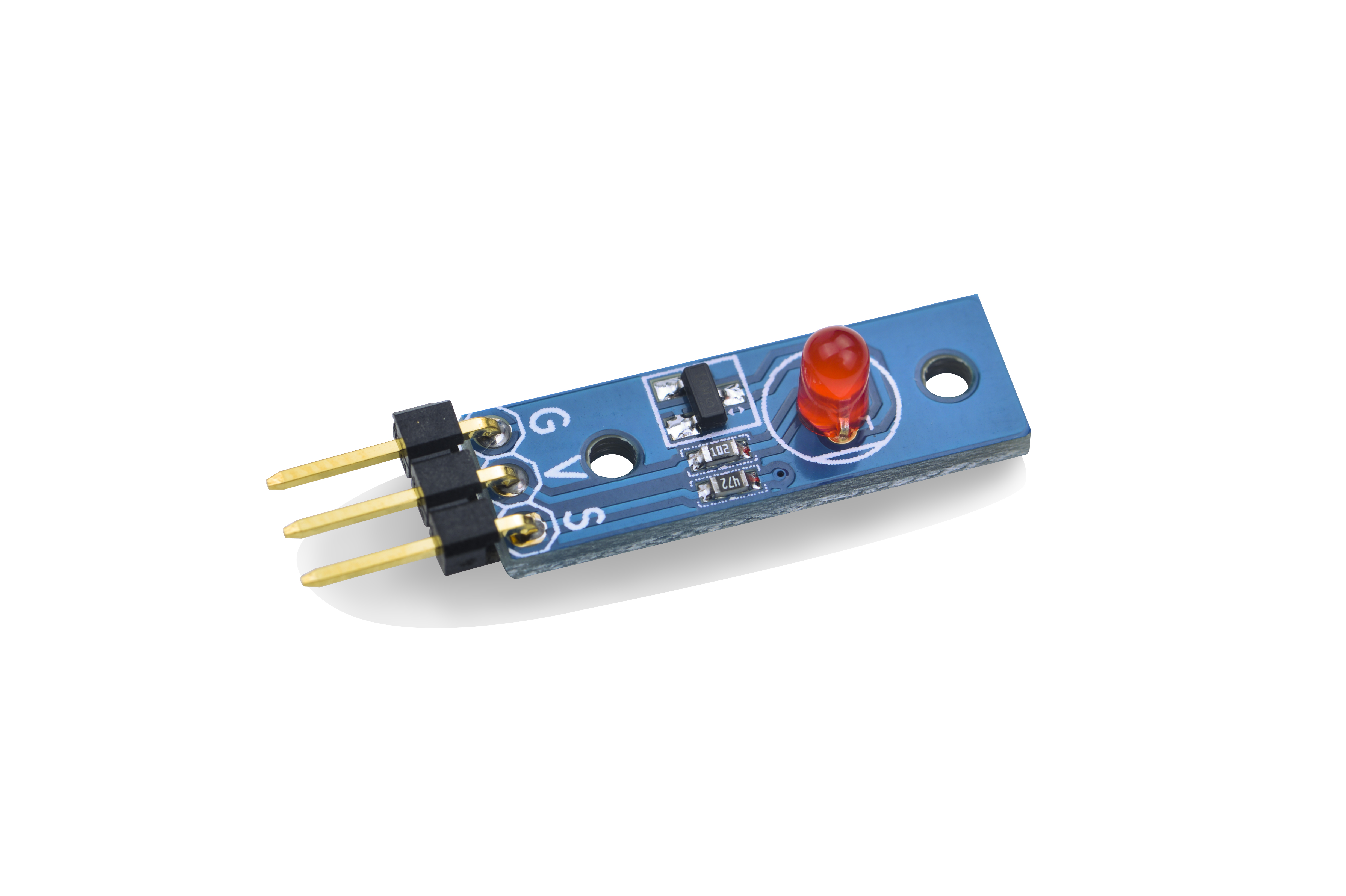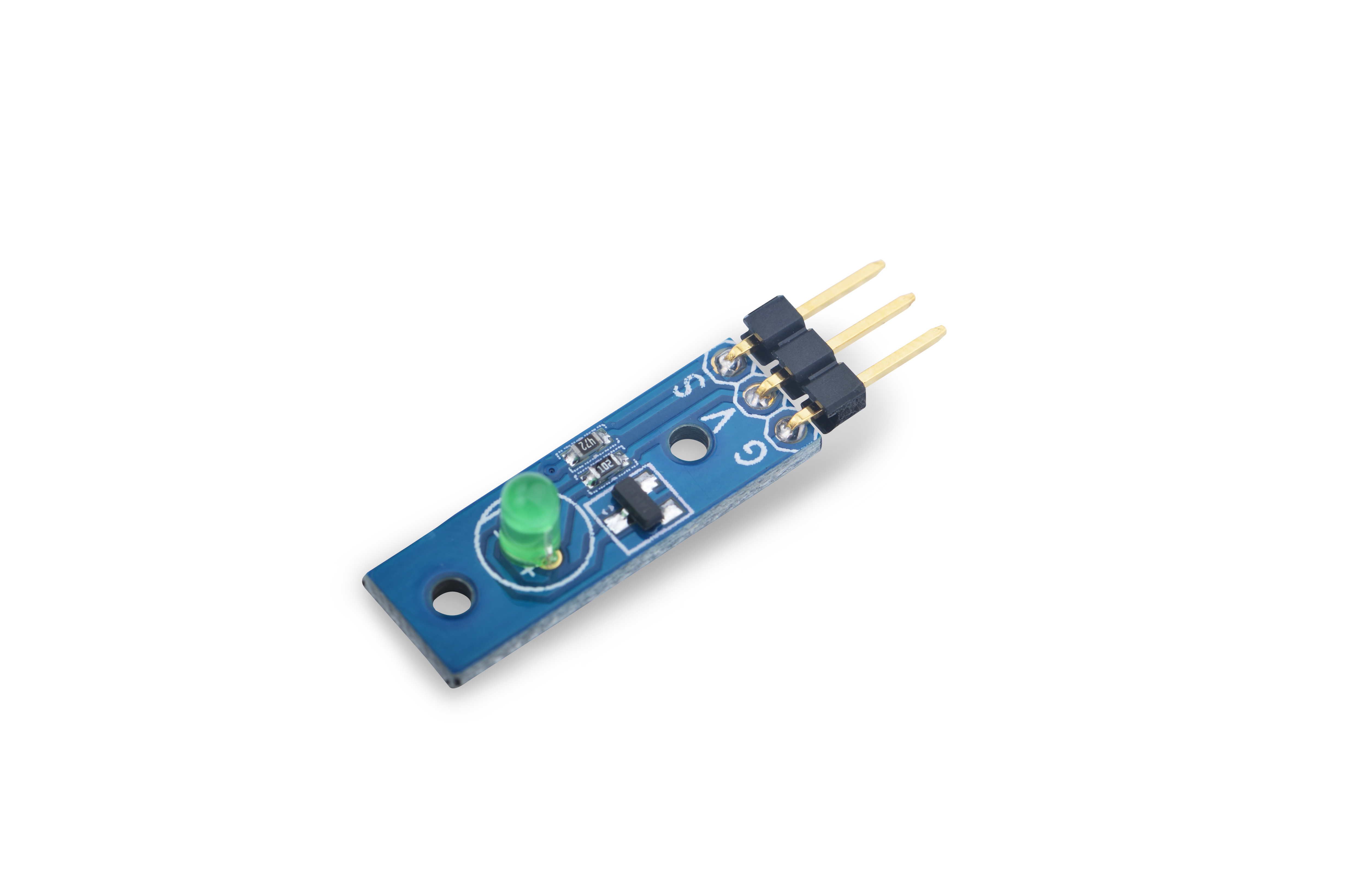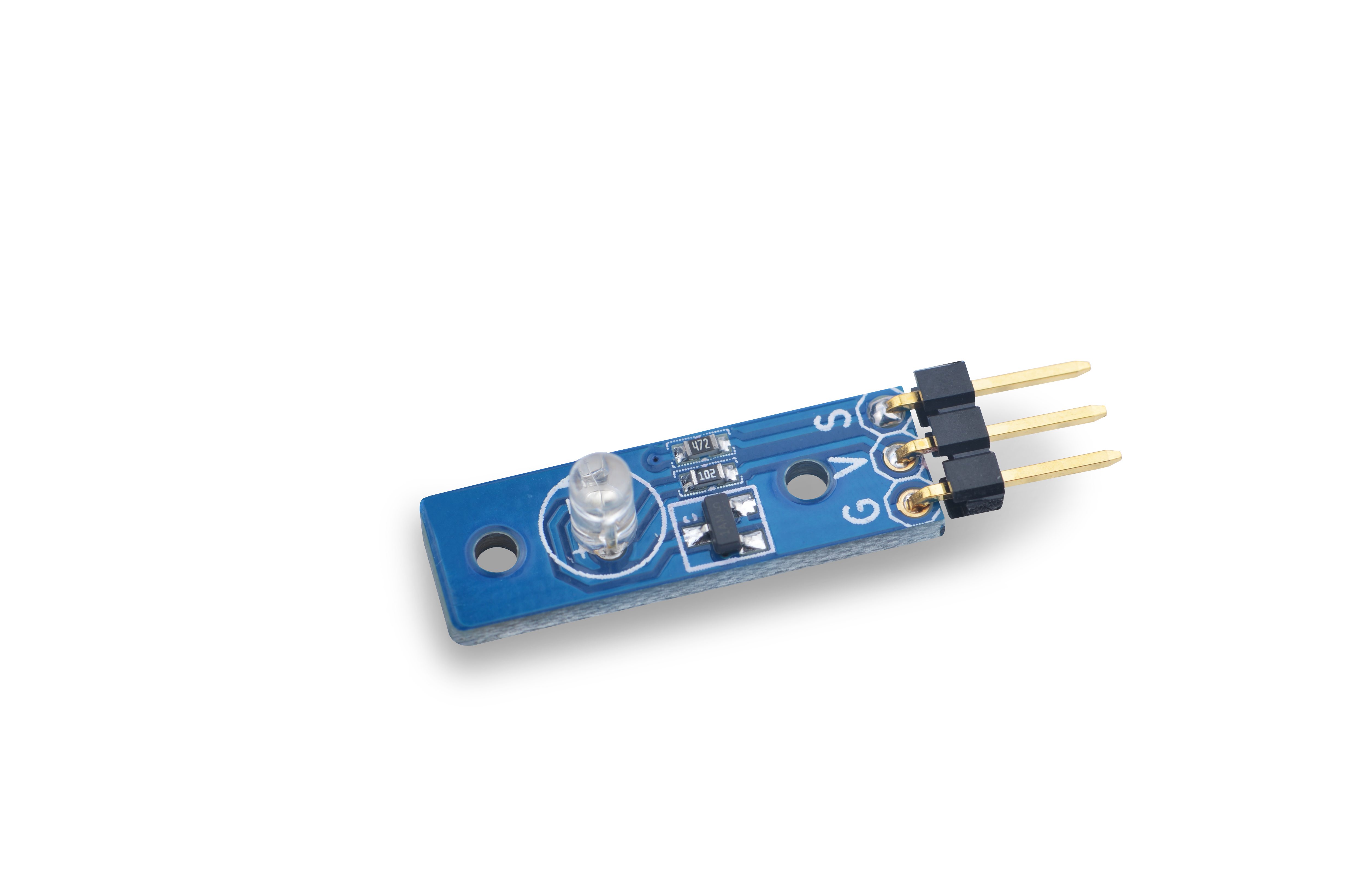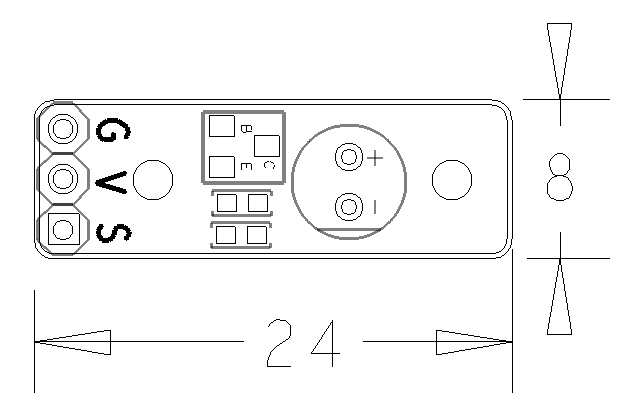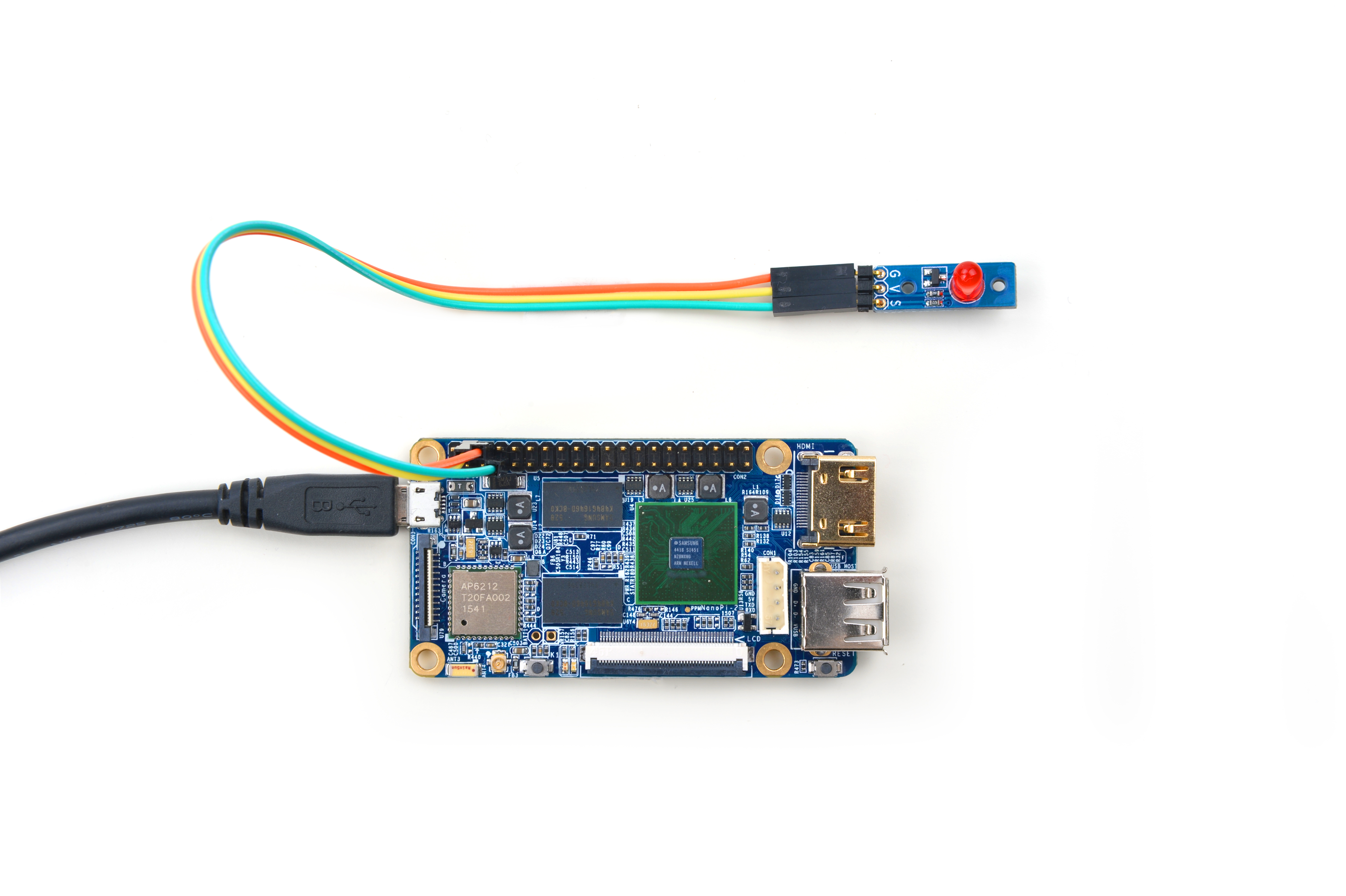Difference between revisions of "Matrix - LED"
(→Download Matrix Source Code) |
(→Download Matrix Source Code) |
||
| Line 48: | Line 48: | ||
</syntaxhighlight> | </syntaxhighlight> | ||
If this is successful a "matrix" directory will be generated, which will contain all the matrix modules' code samples. | If this is successful a "matrix" directory will be generated, which will contain all the matrix modules' code samples. | ||
| + | |||
| + | ==与NanoPi 2连接使用== | ||
| + | ===硬件连接=== | ||
| + | 参考下图连接模块Matrix-LED和NanoPi 2:<br> | ||
| + | [[File:Matrix-LED_nanopi_2.jpg|frameless|600px|Matrix-LED_nanopi_2]] | ||
| + | |||
| + | 连接说明: | ||
| + | {| class="wikitable" | ||
| + | |- | ||
| + | |Matrix-LED || NanoPi | ||
| + | |- | ||
| + | |S || Pin7 | ||
| + | |- | ||
| + | |V || Pin4 | ||
| + | |- | ||
| + | |G || Pin6 | ||
| + | |} | ||
| + | |||
| + | ===编译测试程序=== | ||
| + | 进入Matrix代码仓库,切换到nanopi2分支 | ||
| + | <syntaxhighlight lang="bash"> | ||
| + | $ cd matrix | ||
| + | $ git checkout nanopi2 | ||
| + | </syntaxhighlight> | ||
| + | |||
| + | 编译Matrix配件代码 | ||
| + | <syntaxhighlight lang="bash"> | ||
| + | $ make CROSS_COMPILE=arm-linux- clean | ||
| + | $ make CROSS_COMPILE=arm-linux- | ||
| + | $ make CROSS_COMPILE=arm-linux- install | ||
| + | </syntaxhighlight> | ||
| + | 注意:请确保你的主机PC当前使用的交叉编译器为NanoPi 2配套的arm-linux-gcc-4.9.3。<br> | ||
| + | 编译成功后库文件位于install/lib目录下,而测试程序则位于install/usr/bin目录下,模块Matrix-LED对应的测试程序为matrix-led。<br> | ||
| + | 硬件驱动模块位于modules目录下,对应的驱动源码都包含在在NanoPi 2的Linux内核仓库里:https://github.com/friendlyarm/linux-3.4.y.git <br> | ||
| + | |||
| + | ===运行测试程序=== | ||
| + | 将带有Debian系统的SD卡插入一台运行Linux的电脑,可以挂载SD卡上的boot和rootfs分区。<br> | ||
| + | 假设rootfs分区的挂载路径为/media/rootfs,执行以下命令将Matrix的硬件驱动、库文件和测试程序拷贝到NanoPi 2的文件系统上。<br> | ||
| + | <syntaxhighlight lang="bash"> | ||
| + | $ cp modules /media/rootfs/ -r | ||
| + | $ cp install/lib/* /media/rootfs/lib/ -d | ||
| + | $ cp install/usr/bin/* /media/rootfs/usr/bin/ | ||
| + | </syntaxhighlight> | ||
| + | |||
| + | 将SD卡重新插入NanoPi 2,上电启动,在Debian的shell终端中执行以下命令运行模块Matrix-LED的测试程序。<br> | ||
| + | <syntaxhighlight lang="bash"> | ||
| + | $ matrix-led | ||
| + | </syntaxhighlight> | ||
| + | 运行效果如下:<br> | ||
| + | [[File:matrix-led_result.png|frameless|600px|matrix-led_result]] <br> | ||
| + | 可以看到LED在不停地闪烁。 | ||
| + | |||
| + | ===代码展示=== | ||
| + | <syntaxhighlight lang="c"> | ||
| + | int main(int argc, char ** argv) | ||
| + | { | ||
| + | int ledPin = GPIO_PIN(7); | ||
| + | int i = 0; | ||
| + | int ret = -1; | ||
| + | |||
| + | if ((ret = exportGPIOPin(ledPin)) == -1) { | ||
| + | printf("exportGPIOPin(%d) failed\n", ledPin); | ||
| + | } | ||
| + | if ((ret = setGPIODirection(ledPin, GPIO_OUT)) == -1) { | ||
| + | printf("setGPIODirection(%d) failed\n", ledPin); | ||
| + | } | ||
| + | |||
| + | for (i = 0; i < LED_BLINK_TIMES; i++) { | ||
| + | if (i % 2) { | ||
| + | ret = setGPIOValue(ledPin, GPIO_HIGH); | ||
| + | } else { | ||
| + | ret = setGPIOValue(ledPin, GPIO_LOW); | ||
| + | } | ||
| + | if (ret == -1) { | ||
| + | printf("setGPIOValue(%d) failed\n", ledPin); | ||
| + | } | ||
| + | printf("LED blinking times %d\n", i); | ||
| + | sleep(1); | ||
| + | } | ||
| + | unexportGPIOPin(ledPin); | ||
| + | return 0; | ||
| + | } | ||
| + | </syntaxhighlight> | ||
==Connect to NanoPi== | ==Connect to NanoPi== | ||
Revision as of 10:05, 18 February 2016
Contents
1 Introduction
The Matrix-LED is an LED module with three 2.54 mm spacing pins: V(supply voltage),G(ground) and S(signal) which is connected to a triode to turn the LED on or off. You can write high or low, or PWN signals(3.3V or 5V) to S. When you write high to S the LED will turn on and become brightest. When you write low to S the LED will turn off. If you write PWM signals to S the LED's brightness will vary depending on the PWM's signal variances.
2 Features
- GPIO/PWM interface, 3.3/5V, PWM brightness control
- Small, easy to be used in various situations
- 2.54 mm spacing pin
- PCB Dimension(mm): 8 x 24
- Pin Description:
| Pin | Description |
| S | GPIO |
| V | Supply Voltage 5V |
| G | Ground |
3 Basic Device Operation
The module has three 2.54 mm spacing pins: V(supply voltage),G(ground) and S(signal) which is connected to a triode to turn the LED on or off. You can write high or low, or PWN signals(3.3V or 5V) to S. When you write high to S the LED will turn on and become brightest. When you write low to S the LED will turn off. If you write PWM signals to S the LED's brightness will vary depending on the PWM's signal variances.
4 Download Matrix Source Code
All the matrix modules' code samples are open source. They are maintained on GitHub - https://github.com/friendlyarm/matrix.git
Each branch in this hub contains the matrix modules' code samples for a board that the matrix modules can work with.
- The nanopi branch contains the matrix modules' code samples for the NanoPi
- The nanopi 2 branch contains the matrix modules' code samples for the NanoPi 2
- The tiny4412 branch contains the matrix modules' code samples for the Tiny4412
- The raspberrypi branch contains the matrix modules' code samples for the RaspberryPi
Please follow the steps below to get the source code:
Install the git utility on a PC running Ubuntu14.04
$ sudo apt-get install git
Clone the matrix code from GitHub
$ git clone https://github.com/friendlyarm/matrix.git
If this is successful a "matrix" directory will be generated, which will contain all the matrix modules' code samples.
5 与NanoPi 2连接使用
5.1 硬件连接
连接说明:
| Matrix-LED | NanoPi |
| S | Pin7 |
| V | Pin4 |
| G | Pin6 |
5.2 编译测试程序
进入Matrix代码仓库,切换到nanopi2分支
$ cd matrix $ git checkout nanopi2
编译Matrix配件代码
$ make CROSS_COMPILE=arm-linux- clean $ make CROSS_COMPILE=arm-linux- $ make CROSS_COMPILE=arm-linux- install
注意:请确保你的主机PC当前使用的交叉编译器为NanoPi 2配套的arm-linux-gcc-4.9.3。
编译成功后库文件位于install/lib目录下,而测试程序则位于install/usr/bin目录下,模块Matrix-LED对应的测试程序为matrix-led。
硬件驱动模块位于modules目录下,对应的驱动源码都包含在在NanoPi 2的Linux内核仓库里:https://github.com/friendlyarm/linux-3.4.y.git
5.3 运行测试程序
将带有Debian系统的SD卡插入一台运行Linux的电脑,可以挂载SD卡上的boot和rootfs分区。
假设rootfs分区的挂载路径为/media/rootfs,执行以下命令将Matrix的硬件驱动、库文件和测试程序拷贝到NanoPi 2的文件系统上。
$ cp modules /media/rootfs/ -r $ cp install/lib/* /media/rootfs/lib/ -d $ cp install/usr/bin/* /media/rootfs/usr/bin/
将SD卡重新插入NanoPi 2,上电启动,在Debian的shell终端中执行以下命令运行模块Matrix-LED的测试程序。
$ matrix-led5.4 代码展示
int main(int argc, char ** argv) { int ledPin = GPIO_PIN(7); int i = 0; int ret = -1; if ((ret = exportGPIOPin(ledPin)) == -1) { printf("exportGPIOPin(%d) failed\n", ledPin); } if ((ret = setGPIODirection(ledPin, GPIO_OUT)) == -1) { printf("setGPIODirection(%d) failed\n", ledPin); } for (i = 0; i < LED_BLINK_TIMES; i++) { if (i % 2) { ret = setGPIOValue(ledPin, GPIO_HIGH); } else { ret = setGPIOValue(ledPin, GPIO_LOW); } if (ret == -1) { printf("setGPIOValue(%d) failed\n", ledPin); } printf("LED blinking times %d\n", i); sleep(1); } unexportGPIOPin(ledPin); return 0; }
6 Connect to NanoPi
6.1 Preparations
Please install a Debian on a NanoPi and an appropriate cross compiler on a PC. Please refer to wiki:NanoPi
Compile a NanoPi kernel. Note: please use the kernel's source code from the nanopi-v4.1.y-matrix branch.
$ git clone https://github.com/friendlyarm/linux-4.x.y.git $ cd linux-4.x.y $ git checkout nanopi-v4.1.y-matrix $ make nanopi_defconfig $ touch .scmversion $ make
6.2 Hardware Connection
Please refer to the following connection diagram to connect the Matrix-LED to the NanoPi
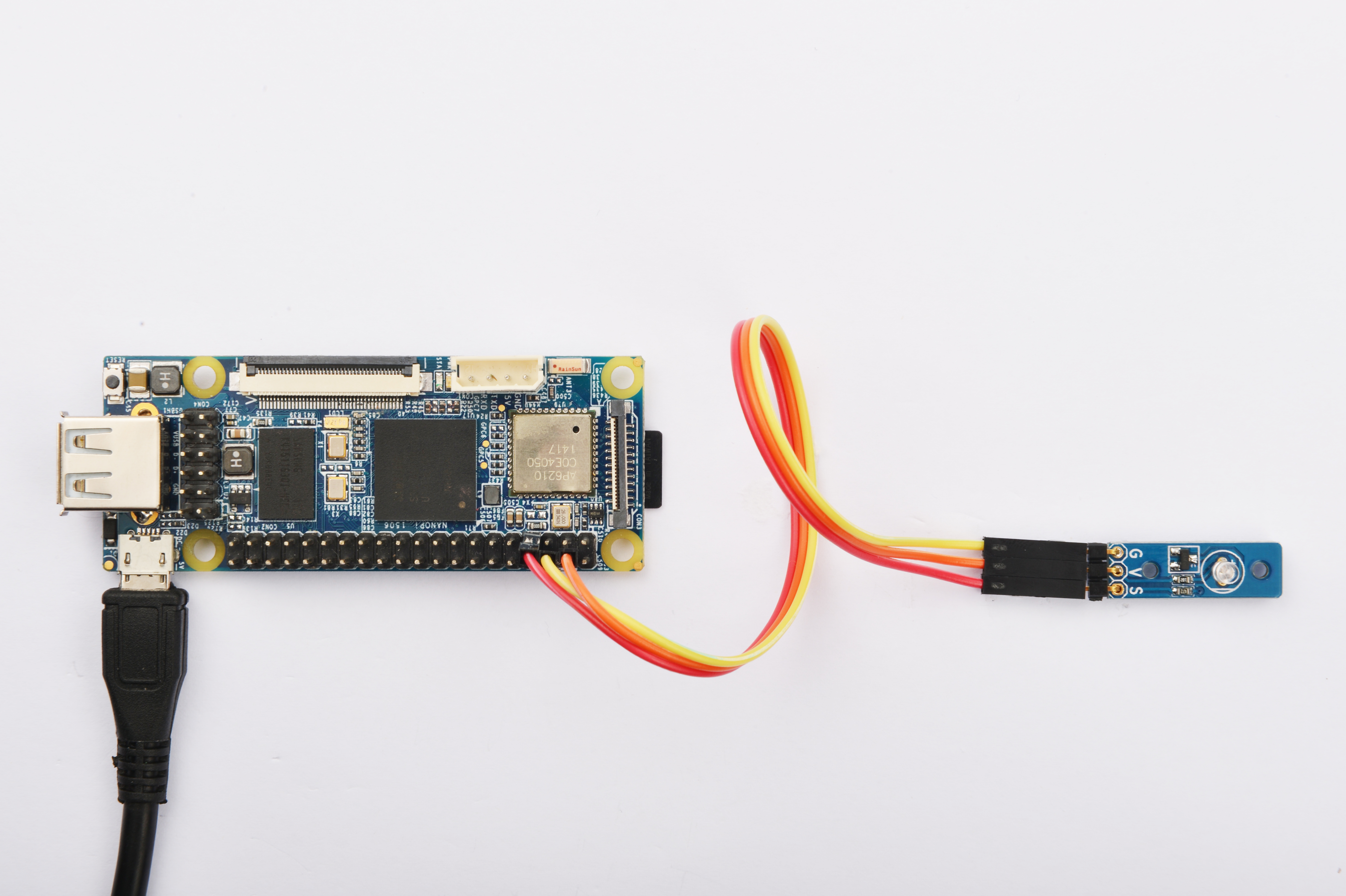
Connection Details:
| Matrix-LED | NanoPi |
| S | Pin7 |
| V | Pin4 |
| G | Pin6 |
6.3 Compile Test Program
Please login the matrix hub and enter the nanopi branch
$ cd matrix $ git checkout nanopi
Compile the matrix code
$ make CROSS_COMPILE=arm-linux- clean $ make CROSS_COMPILE=arm-linux- $ make CROSS_COMPILE=arm-linux- install
Note: please make sure to install the cross compiler "arm-linux-gcc-4.4.3" on your PC, which is used to compile files for the NanoPi-Debian.
Generated library files are under the "install/lib" directory. Applications are under the "install/usr/bin" directory. The test program for the "Matrix-LED" module is "matrix-led".
6.4 Run Test Program
Please copy the library files and test program to the NanoPi
$ cp install/usr/bin/* nanopi_rootfs/usr/bin/ $ cp install/lib/* nanopi_rootfs/lib/ -d
Power on the NanoPi and run the following command in Debian's terminal
$ matrix-led6.5 Code Sample
int main(int argc, char ** argv) { int ledPin = GPIO_PIN1; int i = 0; int ret = -1; if ((ret = exportGPIOPin(ledPin)) == -1) { printf("exportGPIOPin(%d) failed\n", ledPin); } if ((ret = setGPIODirection(ledPin, GPIO_OUT)) == -1) { printf("setGPIODirection(%d) failed\n", ledPin); } for (i = 0; i < LED_BLINK_TIMES; i++) { if (i % 2) { ret = setGPIOValue(ledPin, GPIO_HIGH); } else { ret = setGPIOValue(ledPin, GPIO_LOW); } if (ret == -1) { printf("setGPIOValue(%d) failed\n", ledPin); } printf("LED blinking times %d\n", i); sleep(1); } unexportGPIOPin(ledPin); return 0; }
7 Connect to Tiny4412
7.1 Preparations
Please refer to the Tiny4412's user's manual to install a UbuntuCore on the Tiny4412 and install an appropriate cross compiler on a PC.
Note: only the Tiny4412SDK-1506 carrier board can work with this module.
7.2 Hardware Connection
Please refer to the following diagram to connect the Matrix-LED to the Tiny4412
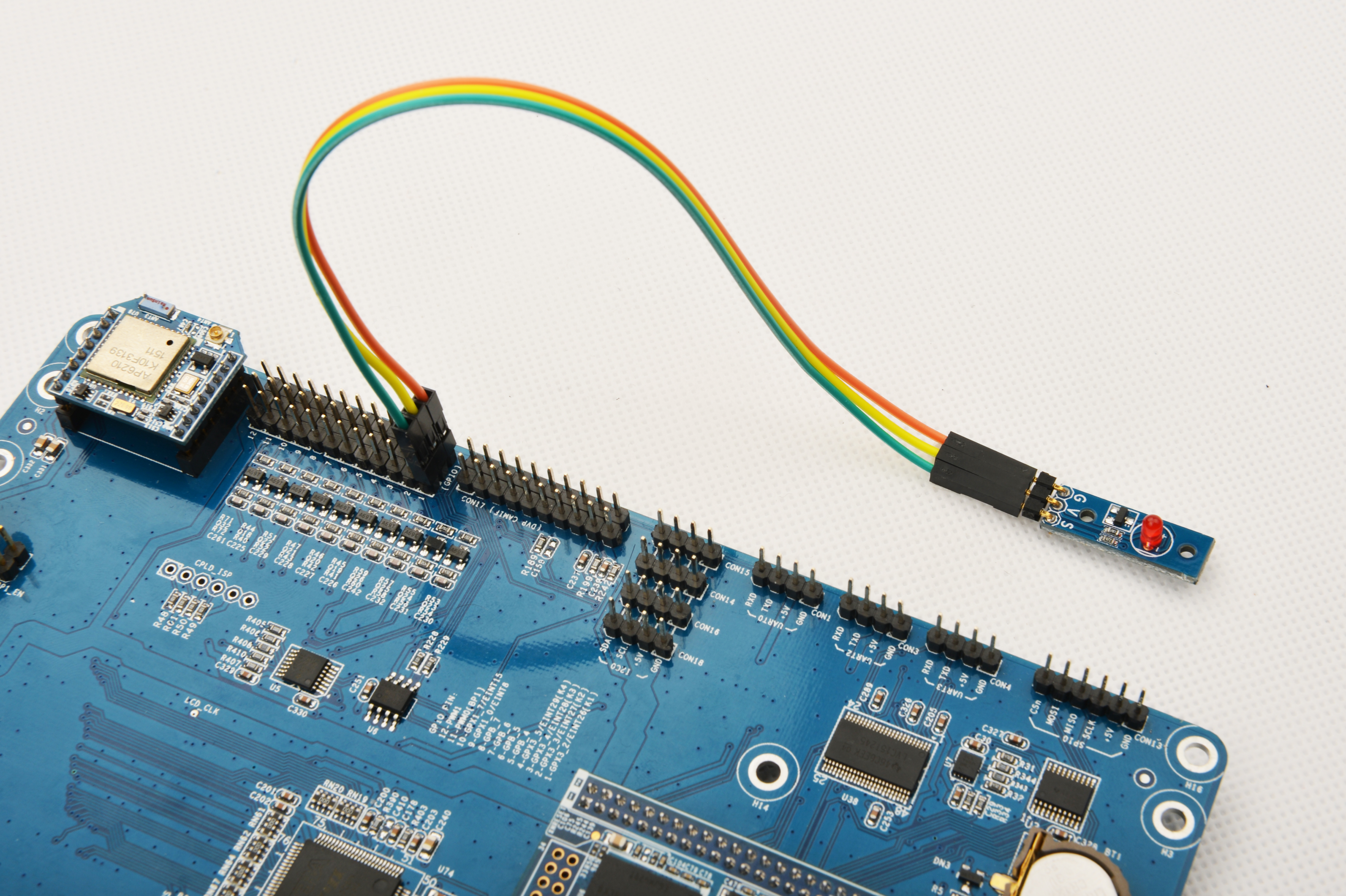
Connection Details:
| Matrix-LED | Tiny4412 |
| S | GPIO1 S |
| V | GPIO1 5V |
| G | GPIO1 GND |
7.3 Compile Test Program
Please login the Matrix hub and enter the matrix-tiny4412 branch
$ cd matrix $ git checkout tiny4412
Compile the matrix code
$ make CROSS_COMPILE=arm-linux-gnueabihf- clean $ make CROSS_COMPILE=arm-linux-gnueabihf- $ make CROSS_COMPILE=arm-linux-gnueabihf- install
Note: please make sure to install the cross compiler "arm-linux-gnueabihf-gcc-4.7.3" on your PC, which is used to compile files for the Tiny4412-UbuntuCore.
Generated library files are under the "install/lib" directory. Applications are under the "install/usr/bin" directory. The test program for the "Matrix-LED" module is "matrix-led".
7.4 Run Test Program
Please copy the library files and test program to the Tiny4412
$ cp install/usr/bin/* tiny4412_rootfs/usr/bin/ $ cp install/lib/* tiny4412_rootfs/lib/ -d
Power on the Tiny4412 and run the following command in UbuntuCore's terminal
$ matrix-led7.5 Code Sample
int main(int argc, char ** argv) { int ledPin = GPIO_PIN1; int i = 0; int ret = -1; if ((ret = exportGPIOPin(ledPin)) == -1) { printf("exportGPIOPin(%d) failed\n", ledPin); } if ((ret = setGPIODirection(ledPin, GPIO_OUT)) == -1) { printf("setGPIODirection(%d) failed\n", ledPin); } for (i = 0; i < LED_BLINK_TIMES; i++) { if (i % 2) { ret = setGPIOValue(ledPin, GPIO_HIGH); } else { ret = setGPIOValue(ledPin, GPIO_LOW); } if (ret == -1) { printf("setGPIOValue(%d) failed\n", ledPin); } printf("LED blinking times %d\n", i); sleep(1); } unexportGPIOPin(ledPin); return 0; }
